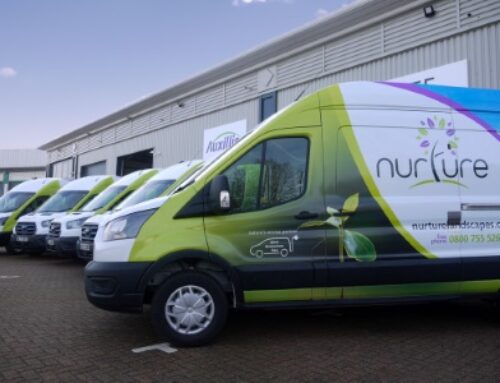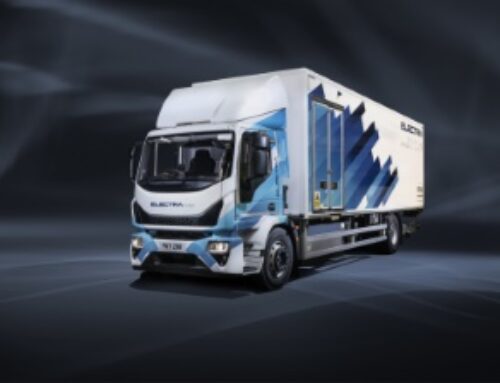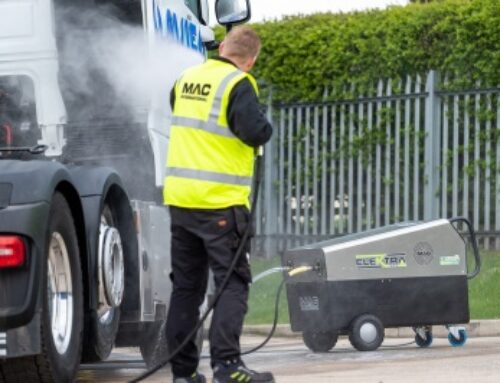Safe loading with lift trucks
 Laura Nelson, managing director at transport training accreditation body RTITB, offers advice on how to reduce risk when loading LGVs
Laura Nelson, managing director at transport training accreditation body RTITB, offers advice on how to reduce risk when loading LGVs
Even though it takes place day in, day out in logistics operations nationwide, loading and unloading LGVs using equipment such as lift trucks or pallet trucks can be dangerous.
The combination of other vehicles moving in the area, the characteristics of trailer suspension movement, pedestrians, drivers, and the loading bay environment in general, all increase risk.
Add to that heavy loads, moving vehicles, and working at height, and there is the potential for injuries or fatalities if loads are not handled correctly.
Employer responsibilities
As an employer, you have a responsibility to make sure that you set a strong and safe foundation around loading operations.
For instance, systems should be in place so that vehicle movements in loading/unloading areas are well controlled and closely monitored, and that other people in the area that are not directly involved with the process are also aware of the risks.
There should also be rules in place so that drivers are not involved with the loading process until is it safe to do so and should instead be located in a safe area until loading/unloading is complete.
Safeguards must also be put in place against drivers accidentally driving away too early, such as traffic lights, vehicle restraints and key custody arrangements that can be enforced during loading/unloading.
Then there are infrastructure considerations. Where loading takes place, overhead areas should be clear of electric cables so there is no risk of contact with them. The loading area should also be level and well lit, and firm ground should be provided for trailers to park on to maintain stability.
 If permanent loading platforms are used, these must be constructed and designed to safely withstand the weight of the lift truck and the load it is carrying. If temporary loading platforms are used, these must be clearly marked with the maximum load they can carry and securely attached to the vehicle trailer.
If permanent loading platforms are used, these must be constructed and designed to safely withstand the weight of the lift truck and the load it is carrying. If temporary loading platforms are used, these must be clearly marked with the maximum load they can carry and securely attached to the vehicle trailer.
Importantly, employers must ensure that their material handling equipment (MHE) operators involved in loading and unloading, with counterbalance lift trucks, pallet trucks or stacker trucks for instance, are specifically trained in safe working practices and aware of the risks.
Vehicle and trailer loading can be carried out in a number of different ways: for example, loading from the side using a bulk stacking technique, or loading from the rear via a dock or ramp.
Many of the safety protocols and considerations are the same, regardless of the approach taken and should be communicated as part of operator training for both safety and compliance.
Be prepared
One essential element of operator training is understanding what should be done before loading or unloading even begins. During training, they should be taught that they must take personal responsibility for their own safety and should not rely on other parties to make all necessary checks and take appropriate safety steps.
Policies and procedures regarding vehicle safety at loading docks will vary from site to site, so it is important you make operators fully aware and familiar with the processes used in your business.
Also, where more than one company is involved in the operation, operators need to be aware of the arrangements that have been agreed with regard to instructions, equipment, and cooperation.
Regardless of site-specific guidelines, prior to loading or unloading, the vehicle or trailer must be properly secured and ready.
Safety considerations could include the LGV having the parking brake on, neutral engaged, engine switched off with key removed, wheels chocked and any stabilisers or ‘semi-trailer trestles’, such as fifth wheel supports, applied. The vehicle load deck should be assessed for condition or any debris prior to loading.
Driver communication should also be addressed. Operators should know how to manage the risk of driveaways and that loading requirements should be clarified with the driver. Employers should consider ways to tackle any language barriers that may be encountered during this process.
The lowdown on loads
All loads or pallets should be in good condition prior to loading, so operators need to be trained as to what ‘good’ looks like. Through training, they must be taught how loads should be properly secured to pallets and once on the vehicle, how pallets should be securely attached to the vehicle so that they cannot move or fall off.
Of course, overhanging loads should be kept to a minimum but ideally avoided wherever possible.
Loads should be spread evenly, as far is reasonably practicable, as uneven loads can make the vehicle unstable. Operators should understand how to secure and arrange loads appropriately so that they do not slide around and to use any available safety equipment.
Consideration must also be given to ‘multi drop’ deliveries, and which loads will be first off so that the vehicle can be loaded in the correct sequence.
To ensure safety, during loading consideration must be given to the unloading operation too so that the load will arrive in a safe and suitable condition.
Operators should be taught best practice around this – that vehicles and trailers should be loaded with pallets placed tight to one another and against the headboard to prevent the load from moving whilst in transit, especially under braking.
Pallets should also be deposited from side to side, in order to distribute the load evenly and avoid exceeding the maximum gross and axle weights of the vehicle or trailer. Importantly, this will allow the vehicle’s capacity to be fully utilised, supporting productivity.
Operators should be trained in the checks that must be made before unloading a vehicle or trailer to make sure load movement has not occurred during transport, as it is important to check that the load will not move or fall when restraints are released.
Checks should be made to ensure that the right load is being removed, that the load is in a suitable condition to be lifted off and that the end location for the load is suitable.
Even if an operator understands the policies, processes, and fundamentals of how to load or unload a vehicle, specific knowledge will also be needed for safety in your particular operation. For instance, consider the specific set of risks posed by trailers that an operator may not have encountered before.
An operator may already understand that if they are using a lift truck with a mast that all round observations must be made to ensure that there is adequate clearance above. But have they been taught that they must take extra care when loading and unloading unsupported semi-trailers, as excessive weight placed over the kingpin may result in the trailer tipping forwards? Or that there is no edge protection if they are loading or unloading curtain-side trailers?
Incorrect MHE operation during loading can lead to upending or damaging the trailer, collapsing the landing gear, lateral instability, trailer suspension movement, load bed damage or working at height incidents, all of which pose a serious risk to safety.
Operators should be trained with an understanding of how to assess and reduce these risks. For instance, trailers should always be braked when parked, the trailer deck and landing legs should be able to support the lift truck and load.
Bridging the gap
Operators also require a thorough understanding of the purpose of equipment such as ramps, dock bridging platforms or goods lifts, and the safety checks they should undertake before using the equipment.
For example, operators must be able to check if the equipment is compatible with the vehicle or trailer, how to secure it properly so that is doesn’t move, and how to securely fit any edge protection.
Ramps, platforms, and lifts should be marked with the maximum load they are designed to carry, but does the operator know the combined weight of their truck and the load? And has the ramp, platform or lift been authorised for driving on by the owner or employer?
Equipment should be inspected regularly for integrity, but the operator must always check that it is free from any damage or faults.
In the case of a dock leveller platform, operators also need to know to confirm that the platform is level and be able to confirm the condition and functionality of dock engagement systems, including mechanical interlocks and traffic light systems.
And when using tail lifts, operators must be trained to approach the lift with the load leading, turn 90 degrees and park away from the sides before the lift is operated.
Reduce risks with training
By their very nature, loading and unloading operations are risky. However, ensuring that MHE operators receive adequate training across all three stages – Basic, Specific Job and Familiarisation training – is a tried and tested method for employers to not only improve load handling safety and reduce damage, but also to maximise productivity and ensure compliance with relevant regulations.












